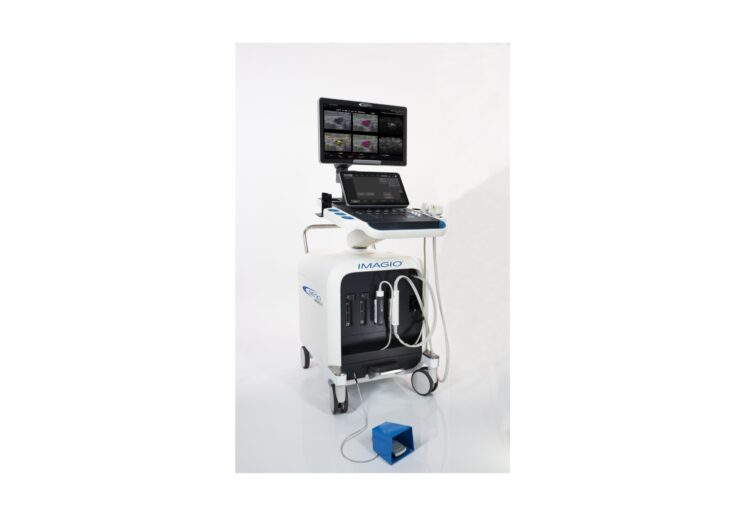Study evaluates feasibility of leveraging Seno’s Imagio System to detect response earlier during breast cancer therapy.

Imagio OA/US technology combines laser optics and grayscale ultrasound to offer functional and anatomical breast imaging. (Credit: Seno Medical)
A limited feasibility study presented at this year’s San Antonio Breast Cancer Symposium (SABCS) found that Seno Medical’s Imagio Breast Imaging System using opto-acoustic/ultrasound (OA/US) shows promise in detecting vessel and oxygenation changes preceding tumor volume decrease in patients who are in a trajectory to achieve a tumor pathologic complete response (pCR).
Similarly, an increase in OA/US scan scores after cycle 1 may be an important indicator of poor response to chemotherapy, allowing for intervention earlier in the course of therapy.
The poster Changes in Breast Cancer Opto-Acoustic Imaging Features During Neoadjuvant Therapy and Correlation with Pathologic Response: A Feasibility Study was presented on Friday, December 8, by Basak Dogan, MD, director of breast imaging research at the University of Texas Southwestern Medical Center, Department of Radiology, Harold C. Simmons Comprehensive Cancer Center.
The analysis highlights the role OA/US can play in predicting response to neoadjuvant therapy (NAC) by evaluating the OA/US imaging feature changes.
The objectives included but were not limited to: (1) identify complete responders (patients who had no residual cancer left after chemotherapy, i.e., pCR) before ultrasound (US) volume changes occur and (2) detect non-responders early in the course of therapy.
Imagio OA/US technology combines laser optics and grayscale ultrasound to offer functional and anatomical breast imaging. The opto-acoustic images provide a unique blood map in and around breast masses, while the ultrasound provides a traditional anatomical image. Through the appearance or absence of two hallmark indicators of cancer — angiogenesis and deoxygenation — the Imagio OA/US Breast Imaging System is a more effective tool to help radiologists confirm or rule out malignancy compared with traditional diagnostic imaging modalities. And it does this without exposing patients to potentially harmful ionizing radiation (X-rays) or contrast agents.
Source: Company Press Release
